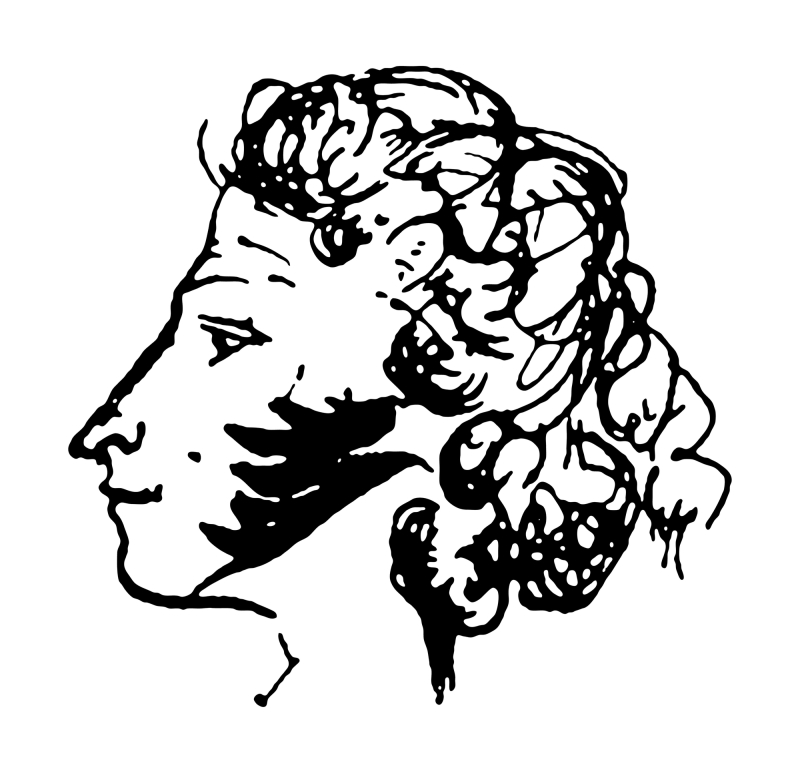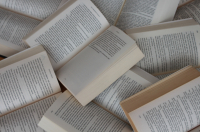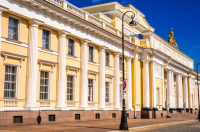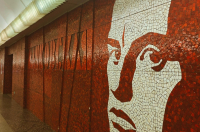“Our everything” – this is how Alexander Pushkin is usually described in Russian textbooks, and this title is well-deserved. Not only was he the country’s first professional poet, he also excelled as a novelist and playwright, and is deemed the most important figure of the so-called Golden Age of Russian literature. Since the poet’s complete biography can be easily found online (and shouldn’t be given as a mere abstract), I will go with a few facts that might fuel your interest:
- Pushkin’s works are still seen as the golden standard of Russian literary language. If you want to speak perfect Russian – read Pushkin.
- Pushkin introduced plain speech into Russian literature. One of his most famous quotes is “Ай да Пушкин, ай да сукин сын!” (loosely translated as “What a Pushkin, what a son of a bitch!”). Oddly enough, it is used to say that someone has done something really great.
- Pushkin was of part-African descent – his great-grandfather hailed from central or east Africa.
- Pushkin died from a gunshot wound he received in a duel, opening a long line of Russian poets who met a violent death.
- Pushkin was so popular during his life that the tsarist police had, allegedly, spread misinformation about the time and place of his wake – in fear of public disturbances.
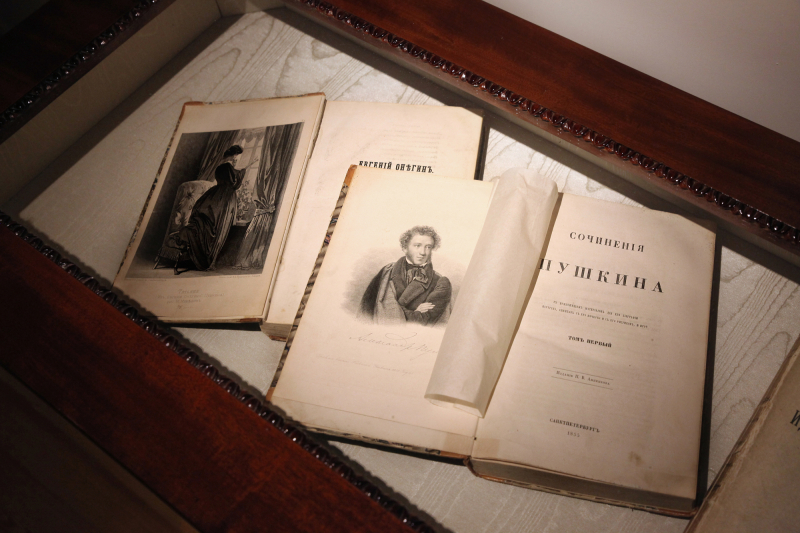
Books by Pushkin. Credit: ozina / photogenica.ru
Reads:
While learning a poet’s biography can give you some insight into their lives, it is their works that form their legacy. The most famous poetic work by Pushkin is his novel in verse Eugene Onegin – a true classic that every Russian can quote, at least to some degree. The English translations are many; personally, I like the earliest (1881, by Henry Spalding) and the relatively new one by James E. Falen (1995). And if you’re aiming to simply get the overall idea – combined with another valuable cultural experience – see the opera by Pyotr Tchaikovsky (often staged at Mariinsky Theatre) or watch its 1958 screen version.
In no way inferior to his poetry, Pushkin’s prose shaped the key topics that remained the focus of later Russian writers. It also gives a good idea of the Russian culture of his time. In this sense, I would recommend reading The Tales of the Late Ivan Petrovich Belkin, or simply Belkin Tales – a series of five short stories. The Shot, for one, can give you some insight into Russian dueling culture, a tradition that ended the poet’s life. Pushkin's only completed novel – The Captain’s Daughter – is one of Russia’s first historic novels, and also a great example of his work.
Two other genres that Pushkin worked in are drama and fairy tales, also in verse. The latter can prove somewhat difficult to read, as a lot is lost in translation, but they are truly unique and fascinating – especially if you complement your reading with proper illustrations (I wholeheartedly recommend the ones by Ivan Bilibin).
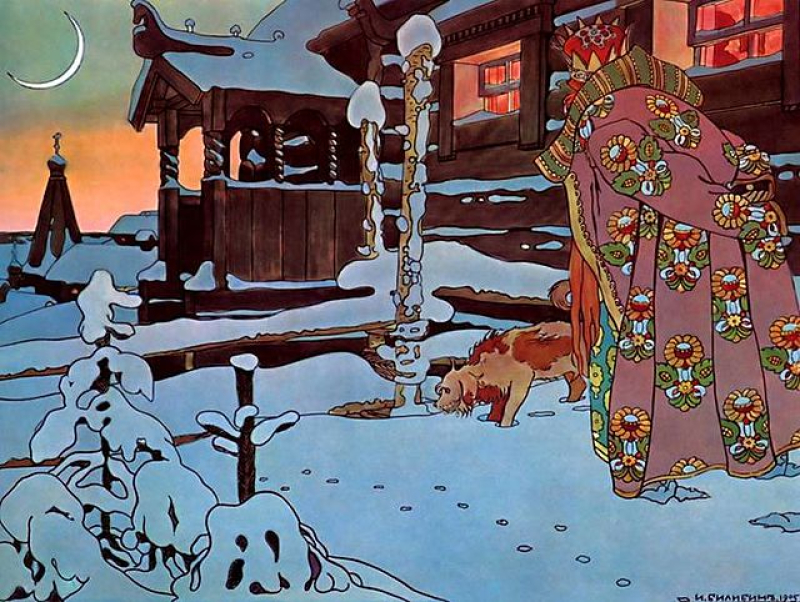
An illustration (1904-1905) by Ivan Bilibin. Credit: Wikimedia Commons (public domain image)
Memorable locations:
Pushkin’s presence in St. Petersburg is huge. In addition to a street, a subway station, and a square of his name, there are three significant toponyms connected to his legacy:
The suburban town of Pushkin, formerly Tsarskoye Selo (“Tsar’s village”), was renamed on the 100-year anniversary of the poet’s death. In his early years, Pushkin was a student at the Imperial Lyceum there; the town’s main attractions are its historical parks and palaces, which can give you a feel of his era. To really experience the atmosphere of Pushkin’s works, I recommend visiting them in autumn (the poet’s favorite season).
While the Bronze Horseman (actually “the copper horseman” – “Медный Всадник” in Russian) is a monument to Peter the Great, the moniker comes from the eponymous Pushkin poem, so the monument is also often associated with the poet. To truly experience the existential dread the poem evokes, try going there at night, in late autumn or winter, when few people are around – the atmosphere is so dense that it has even spawned several urban legends.
Chyornaya Rechka (“Black river” – Rus.) is the name of a river in St. Petersburg and also a a subway station north of the city center. It was not far from there that Pushkin was mortally wounded. A popular misconception is that the river was named “black” because of this tragic event – in fact, it’s just a translation of its old Karelian name, Mustajogi. Still, it is a “Pushkin place” in its own right, and the site of the duel can be easily found thanks to the monument that now stands there.
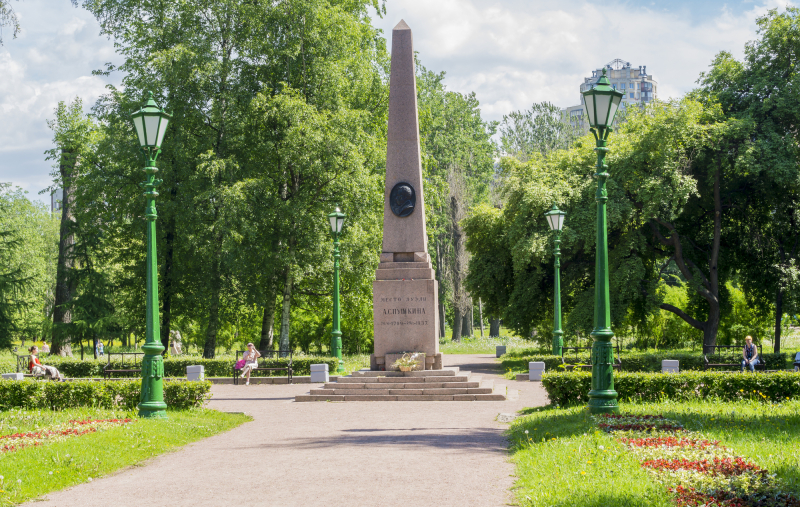
The site of Pushkin’s last duel. Credit: MAKEEVVLADIMIR.MAIL.RU / photogenica.ru
There are several monuments to the poet in St. Petersburg, mainly sculptures. The oldest stands in Pushkin Square, which is a 20-minute walk from ITMO’s Lomonosova campus. Another one, which is deemed the most popular, is in Arts Square, in front of the Russian Museum. There’s also two statues of Pushkin in St. Petersburg’s subway: one at the namesake station Pushkinskaya and another – at Chyornaya Rechka. Despite being often overlooked due to their location and high passenger traffic, both are real works of art; plus, they give an idea of what Pushkin looked like without bird droppings on his face. Finally, there’s a great sculpture in the Lyceum Garden in the former Tsarskoye Selo near the place where the poet spent his school years.
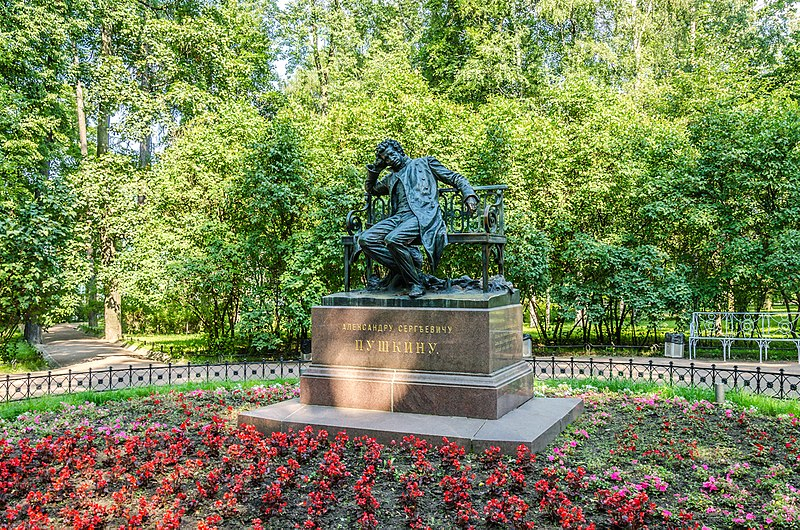
Monument to Pushkin in Tsarskoe Selo, Saint Petersburg. Credit: Alex 'Florstein' Fedorov / Wikimedia Commons / CC BY-SA 4.0
The Pushkin Museum in St. Petersburg is located at Moika Embankment, 12 – his last address in the city and the place of his death. It features a great collection of items from Pushkin’s time, including his personal belongings and writings. The latter are especially interesting, since the poet doodled a lot when he wrote, and was really good at it: one of the most recognizable images of Pushkin was done by the poet himself with a simple quill. One of Pushkin’s best professional portraits (and the one considered the most accurate by his contemporaries) is also exhibited at the museum, as well as many other interesting art pieces of the time. Even if you’re not that interested in Pushkin’s life, the museum is still worth visiting – if only to glimpse at what a nobleman’s life looked like in 19th-century Russia. And if you like this experience, one other similar museum is located at the former Imperial Lyceum in Pushkin.
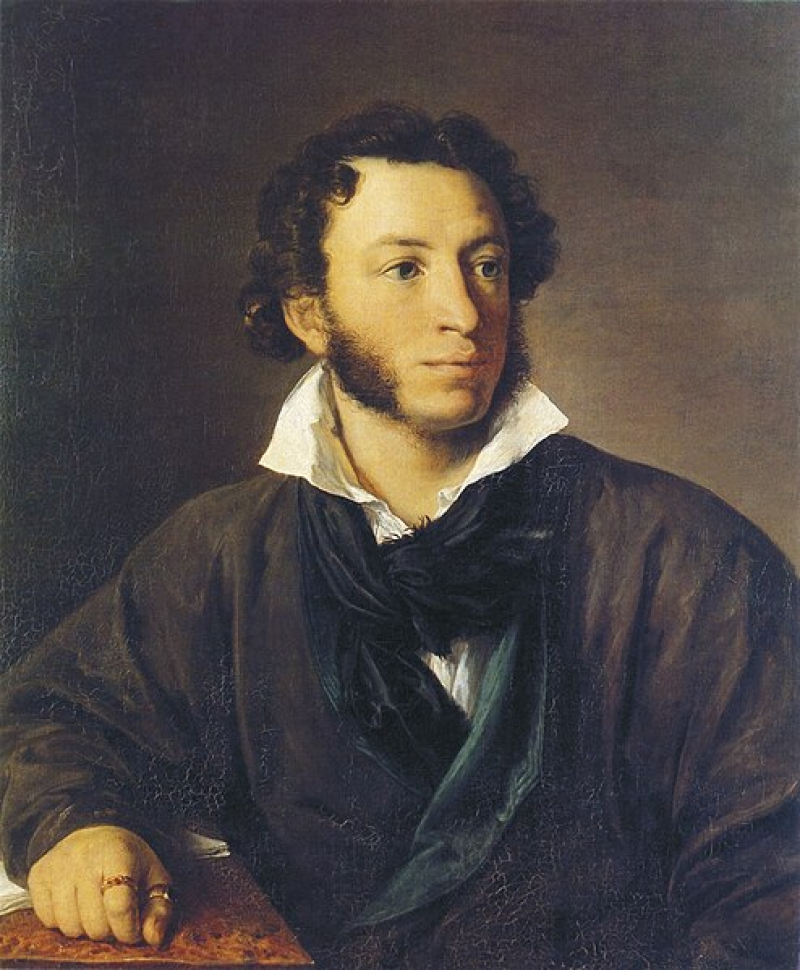
Portrait of Alexander Pushkin (1827) by Vasily Tropinin. The State Tretyakov Gallery, Moscow. Credit: Olga's Gallery / Wikimedia Commons (public domain image)
Finally, even though this article is dedicated to Pushkin’s places in St. Petersburg, I just have to mention two more locations that are a must-see for a true Pushkin fan. One, situated south of Nizhny Novgorod, is the Boldino Museum, located on Pushkin’s family estate – the place where he wrote his most significant works. And if you ever go to Pskov, consider paying a visit to the Mikhaylovskoye Museum Reserve – a large complex encompassing several sites, including Alexander Pushkin’s grave at the Svyatogorsky Monastery.
Enjoyed the read? Check out our team’s other articles on the topic.
